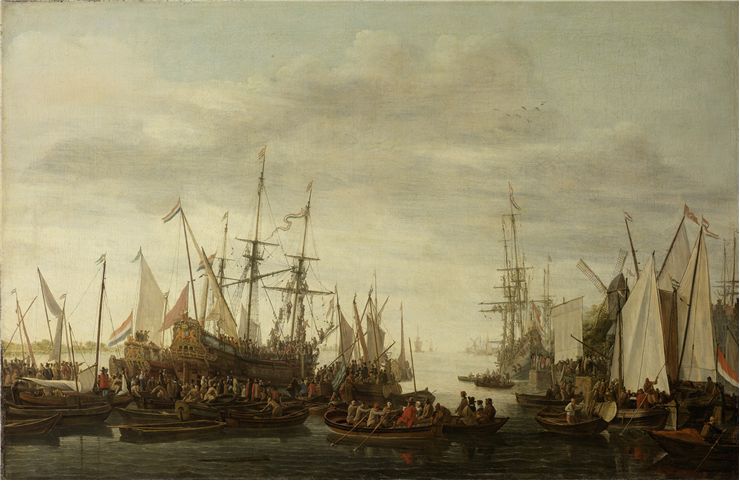Keelhauling - Royal Navy Torture Technique
Every pirate and Navy sailor feared the whip, but what they never wanted to experience is the most horrific, brutal and sadistic torture technique that ever existed in the Age of Sail.
Among several extreme methods of punishment on the sea during Age of Sail, none managed to be so brutal and unforgiving as the practice of Keelhauling. Developed very early in the history of naval travel, this punishment, and execution method managed to survive and remain in use from 9th century BC all the way up to mid 19th century. Its extreme consequences and the fear of its use while on sea managed to solidify its presence in popular culture long after keelhauling stopped being actually used. Starting with the early 1800s, novel writers and entertainment producers (on stage and later film) popularized keelhauling as one of the most gruesome torture methods of the age of piracy, together with more popular “walking the plank”.
The process of Keelhauling involves sailor who is stripped and tied so that he cannot swim, with chains or cannonball being tied to his body (usually legs). He was then fastened with two ropes. One from his back to the yard-arm (the widest point of the horizontal structure of the main mast), and other that went from sailor all the way under the ship to the other side of yard-arm. When sailor was dropped in the water the weight will pull him under the waves, but to prevent him going too much under the crew (sometimes entire crew of the ship) will pull on the second rope, forcing the sailors to to move under the ship and touching the hull, eventually raising him up on the other side of the ship.
This harshest of pirate torture methods left few alive
The punishment here was not focused only on the prospect of drowning (which was a real possibility) but more on the injuries the sailor received while hitting the bottom hull of the ship that was often overgrown with barnacles and other sea life. The cuts received from such close contact could not only cause severe injuries and blood loss, but also the loss of limbs and even in some cases decapitation. The speed of movement while underwater was often crucial in determining how much injuries will sailor get. If the rope was pulled more slowly, weight on the sailor would cause him to go deeper and narrowly miss the barnacles on the hull. But if he was pulled faster, the sailor would remain in contact with the hull during entire underwater travel, causing incredible injuries. During times when underwater sections of the hull were not covered with sea life (if the ship was new or recently cleaned during repairs) or of the ship was too small, keelhauling was done from front to back of the ship. This prolonged the duration the sailor was held underwater. In some cases, Dutch officers pushed an oil-soaked sponge in the victim's mouth, which gave them an opportunity to extract an additional breath of air when they were underwater. Victims of this grueling torture method were usually not brought back on the ship immediately, and instead were left hanging on the yard-arm as a warning to other sailors.
If the captain of the ship was not satisfied with the victim's injuries, the entire process was repeated. 17th-century author Christophorus Frikius described that very event of repeated keelhauling in his book “Christophorus Frikius's Voyages to and through the East Indies”.
The earliest examples of keelhauling were discovered from the artifacts of Greek and Rhodian naval cultures, including vase art that depicted the act of torture. In the Age of Sail, the Dutch, and English governments were the only one that officially adopted the use of keelhauling, although many other nations also practiced it in limited quantities (such as French). English Royal Navy adopted this form of punishment in the 11th century, while Dutch used it between 1560 and 1853. Such drastic forms of torture and execution were permitted on the sea because sailors were viewed as workers who had to completely obey the rules of the owners and officers of ships. While the widespread use of keelhauling stopped in mid 19th century, isolated events of it happening persisted until the 20th century. The most famous example happened in 1882 when two Egyptian sailors were punished by keelhauling near Alexandria.
Modern sailors and public see the practice of keelhauling as inhumane and savage, while in popular language the term gained the life of its own, describing the moments when someone is punished in an extreme way for a very slight violation of rules.
